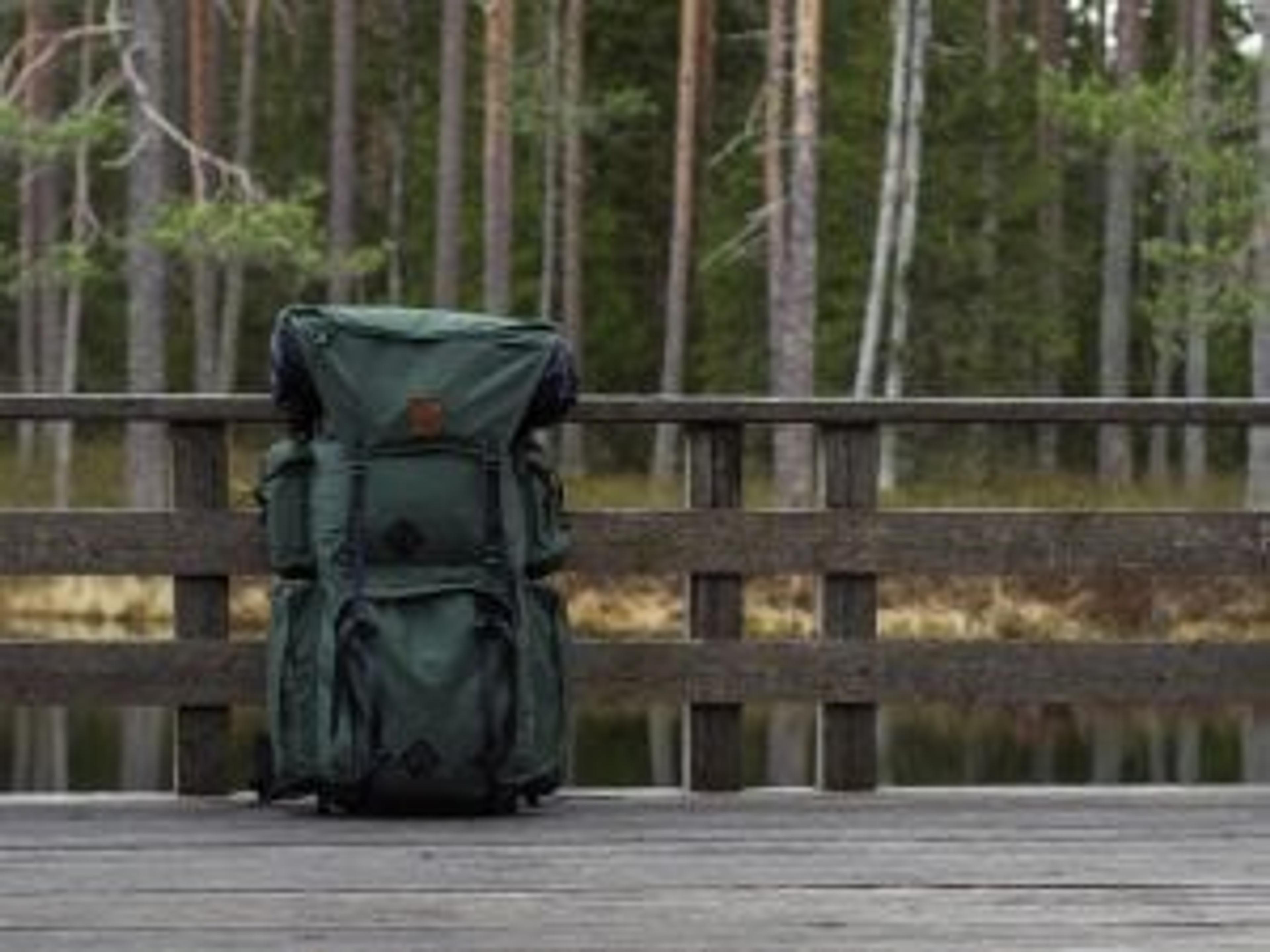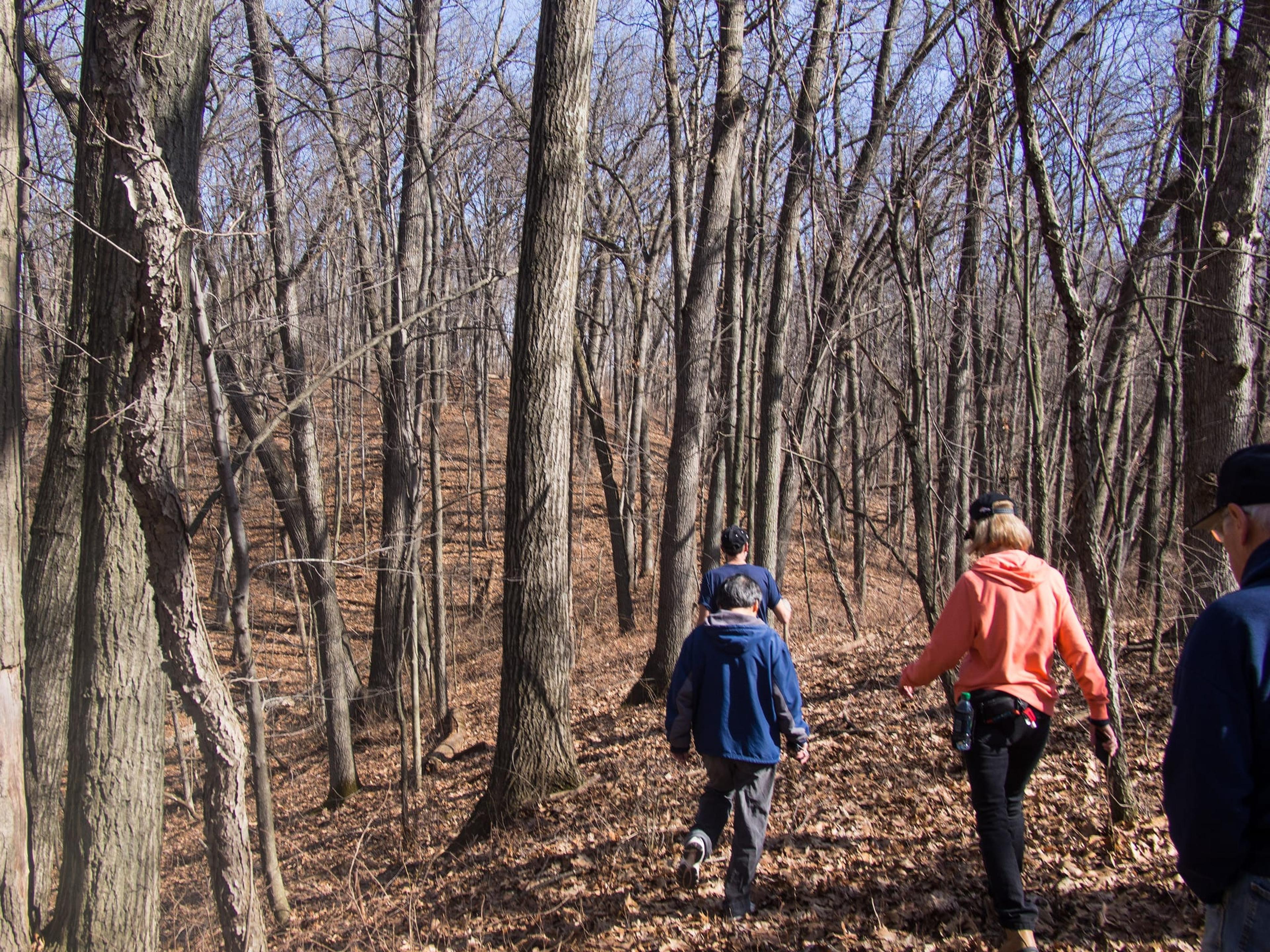Hiking in Michigan: Where to Go and How to Start

Julie Bitely
| 5 min read

Did you know Michigan is home to more than 12,500 miles of state-designated trails? Hiking offers residents and visitors a way to connect with nature and experience beautiful scenery ranging from dunes, waterfalls, lakes, rivers to forests, wetlands, plants and animals.
Here’s a roundup of some of the best hiking trails in Michigan, per region:
If you’re just starting to explore Michigan hiking trails, make sure you’ve got the right gear, ample food and water. But most importantly, you must know the lay of the land.
What to Pack for a Successful Hiking Trip
The first step to a great trip is packing the right gear.

If you’re going someplace new or know you’ll be out for a few hours, consider the following essentials.
- Shoes or boots. Make sure your footwear is up to the challenge of a long trek. Consider hiking boots for longer, more treacherous trails.
- Extra clothes. The forecast might not call for rain, but it’s always a great idea to have waterproof gear and extra layers for added warmth. You never know what the weather will bring.
- Navigation help. Make sure your hiking plans aren’t derailed by carrying a trail map and compass.
- Safety stuff. Pack a small first aid kit, a flashlight or headlamp, and matches or a lighter. A knife or multi-purpose tool could also come in handy, as could an emergency blanket if you get caught out overnight. Don’t forget to bring any medication you may need.
- Sun protection. Sunscreen and sunglasses will save your skin and your eyesight.
- Bathroom supplies. Be prepared for the inevitable. Pack wipes, hand sanitizer and toilet paper, as well as a spare bag to hold soiled wipes. You might also want to invest in a trowel that would allow you to dig a hole to dispose of your waste. Check online for trail etiquette where you’ll be hiking.
- A pack to put it all in. Choose an ample-sized backpack that you can wear comfortably for the duration of your trip.
Hungry Hiking: Guidelines for How Much Food and Drink You’ll Need
Although hiking seems like a somewhat leisurely pursuit, it can be hard work that burns through your body’s energy reserves.

Proper nourishment before, during and after a hike will help you stay strong and energized throughout your adventure. We’ve answered frequently asked questions to help you figure out the types of food and amounts you should consider packing.
- What’s the best way to stay hydrated on a hike? Water is the easiest and least expensive drink to pack. However, if you plan to be out for an extended period, bring electrolyte tablets to add to your H2 –a device that purifies water.
- How much water should I drink? The Academy of Nutrition and Dietetics recommends drinking at least four cups of water pre-hike and an additional two cups for every hour you’re on the trail.
- How much food will I need to pack? For an all-day trip, REI recommends 1.5 to 2.5 pounds of food (about 2,500 to 4,500 calories) “per person per day depending on your size, weight and exertion level.” If you’re going for half the day, plan for a quarter of that amount. Always remember, it’s better to have more food than not enough.
- What types of food should I pack? Go for foods that are energy-dense but lightweight. Nuts, dried fruits, store bought or homemade granola/cereal bars, energy bites, and jerky are all great snacks. If you know you’ll be out during lunch or dinner, pack whole wheat tortillas and fill them with tuna or chicken pouches topped with small condiment packets. Peanut butter and honey sandwiches are another convenient, filling option.
Hike Safely: How to Avoid Harm on Michigan Trails

Hiking with a group is a smart safety move.
Besides having the right gear and enough food and drink, it’s important to consider your personal safety while out on the trail.
- Know your limits. Choose a trail that matches your physical ability level. There’s no shame in taking an easier route, especially if it helps you avoid injury.
- Partner up. Two or three or more heads are often better than one. Hiking with a group can help ensure you don’t get lost and keep curious mammals at bay..
- Tell someone where you’re going. The American Hiking Society advises you to let someone else know where you’ll be hiking and for how long. For extended trips, leave an itinerary and make plans for when and how you’ll be in touch.
- Be wary of wildlife. Although there aren’t many creatures in Michigan that will do you harm, it’s always a good idea to be prepared.
- Watch out for nature’s critters. The Michigan Department of Natural Resources offers tips for how to stay calm and avoid an animal attack. If you happen to see a wolf or coyote, it’s best to stay clear. While these animals rarely attack humans, they will act on instinct if they feel threatened. Never feed any wild animal on the trail.
- Careful around snakes. Michigan’s only venomous snake is the Eastern Massasauga Rattlesnake. According to the DNR, the snake tends to avoid confrontation with humans. Compared to other rattlesnakes, the massasauga is the smallest and has the least toxic venom. They’re only found in the Lower Peninsula and are quite rare. However, if you’re bitten, it is important to seek medical attention immediately.
- Watch for ticks. Read this helpful guide to learn how to spot ticks, prevent bites and effectively remove them from your skin.
- Know when hunting season starts. The DNR provides a calendar that lets you easily see current hunting events happening in the state. If you live in a nearby area, plan to wear hunter orange clothing and hats to make yourself visible or consider taking a different route.
If you enjoyed this post, you might also like:
Photo credits:
- Feature image: Geber86
- Backpack image: kooikkari
- Granola image: jeffreyw
- Group hike image: F. D. Richards





